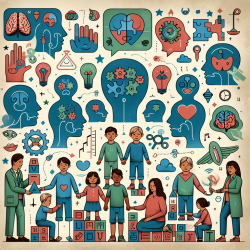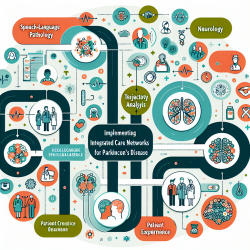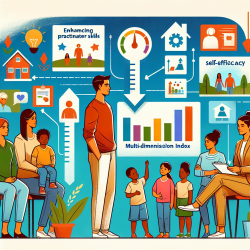Introduction
Indigenous mental health is a critical area of focus, given the disparities that exist between Indigenous and non-Indigenous populations. A recent research article titled "Identifying priorities, directions and a vision for Indigenous mental health using a collaborative and consensus-based facilitation approach" provides valuable insights for practitioners seeking to enhance their skills and improve outcomes for Indigenous communities.
Understanding the Realities of Indigenous Mental Health
The research highlights the importance of understanding the unique mental health experiences of Indigenous peoples. Practitioners must recognize gaps in service delivery, such as inconsistent availability and lack of culturally appropriate care. To address these issues, it is crucial to engage with Indigenous communities and incorporate their voices in the design and delivery of mental health services.
Designing a Holistic and Culturally Rooted Mental Health System
A key outcome of the research is the need for a holistic mental health system that integrates Indigenous knowledge and practices. This involves training and hiring Indigenous mental health workers, engaging Elders as cultural mentors, and moving away from a purely medical model of care. Practitioners should focus on the 'whole person' and consider the individual's family and community context in their approach.
Fostering Cross-Sectoral Engagement and Collaboration
The research underscores the importance of collaboration across sectors, such as health, education, and justice, to provide comprehensive care. Practitioners should advocate for wrap-around services that address social determinants of health and promote interagency collaboration. This approach can help break down silos and create a more integrated and effective mental health system.
Focusing on Children and Youth
Children and youth are a critical focus area for improving Indigenous mental health outcomes. Early investments in health and social development, engaging families in schools, and providing culturally appropriate counseling are essential. Practitioners should work to create supportive environments that foster healthy development and resilience among Indigenous youth.
Conclusion
Practitioners have a vital role in implementing the research findings to improve Indigenous mental health services. By understanding the unique needs of Indigenous communities, designing culturally rooted systems, fostering collaboration, and focusing on children and youth, practitioners can contribute to better mental health outcomes. To delve deeper into the research, practitioners are encouraged to explore the original paper.
To read the original research paper, please follow this link: Identifying priorities, directions and a vision for Indigenous mental health using a collaborative and consensus-based facilitation approach.










